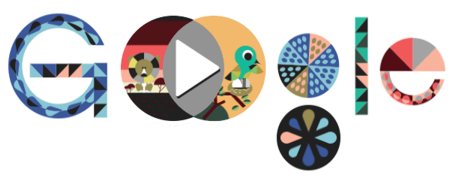| Venn Diagrams In Today's Google Doodle |
| Written by Sue Gee |
| Monday, 04 August 2014 |
|
Today's Google Doodle is great fun to interact with. Google has timed it to coincide with the 180th birthday of John Venn, who introduced the idea of using intersecting circles to to visually sort groups to illustrate their relationships to each other. (Click to go to Doodle) John Venn (4 August 1834 – 4 April 1923) was an English logician and philosopher. His notable innovation was the Venn diagram, which most children are introduced to in their early school days and is used in set theory, probability, logic, statistics, and computer science. Venn became a Fellow of the Royal Society and is commemorated in his home town of Hull by the Venn Building, built 5 years after his death in 1928 as part of the University of Hull campus and by a stained glass window in the dining hall of Gonville and Caius College, Cambridge where he obtained his degree in mathematics and became a fellow.
The idea of the Venn diagram, which Venn himself referred to as "Eulerian Circles", dates from 1880 and was propounded in an article entitled On the Diagrammatic and Mechanical Representation of Propositions and Reasonings in the Philosophical Magazine and Journal of Science. The Google Doodle looks at how sets overlap. There are five groups on the left - mammal, musical, transport, vegetation, sea life. Once you select one of these and five characterises on the right - tiny, has wings, thrives in cold, has a shell and mythical. When you make your second choice you are treated to an animation of something that represents a member of both sets. Of course Venn diagrams capture the basic operations of Boolean logic and so they are known to every programmer. The intersection is And and everything in the two circles is logical Or. What area corresponds to exclusive Or?
More InformationDoodle for John Venn's 180th Birthday
Related ArticlesGoogle Doodle Celebrates Grace Hopper's Birthday Google Doodle For Euler & His Beautiful Equation Google Doodle For Hitch Hiker's Guide Google Doodle - A Turing Machine Puzzle - Update: Play it Now Dangerous Logic - De Morgan & Programming
To be informed about new articles on I Programmer, install the I Programmer Toolbar, subscribe to the RSS feed, follow us on, Twitter, Facebook, Google+ or Linkedin, or sign up for our weekly newsletter.
Comments
or email your comment to: comments@i-programmer.info |
| Last Updated ( Monday, 04 August 2014 ) |




